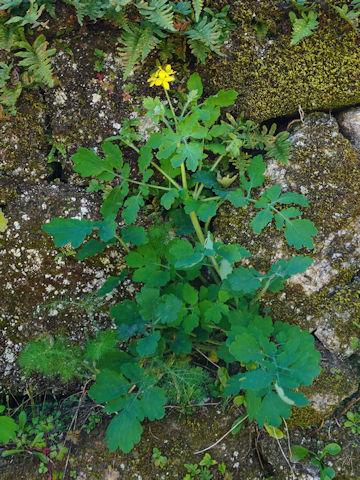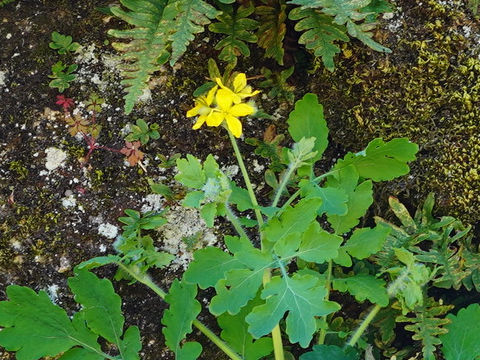 |




|

|
ヨーロッパおよび西アジアが原産で、北アメリカにも広く移入されました。湿った道ばたや荒れ地などに生え、高さは30~120センチになります。葉は青灰色で羽状に分裂し、裂片には波状の縁があります。傷をつけると、黄色からオレンジ色の乳液あるいは樹液をだします。花は4弁の黄色い花弁と2つの萼片があります。花は春の終わりから夏に見ることができます。果実は円筒形の蒴果です。和名でいえば「せいようくさのおう(西洋草の黄)」でしょうか。
|

|
ケシ科クサノオウ属の多年草で、学名は Chelidonium majus。英名は Greater celandine。
|

|
The Greater celandine (Chelidonium majus) belongs to Papaveraceae (the Poppy family). It is a perennial herb that is native to Europe and western Asia and introduced widely in North America. This plant grows on damp roadsides, waste places and can reach 30-120 cm in height. The leaves are blue-gray, pinnate with lobed and wavy margins. When injured, the plant exudes a yellow to orange latex, or sap. The flowers consist of 4 yellow petals with 2 sepals. The flowers appear from late spring to summer. The fruits are cylindrical capsules.
|

|
ポルトガル・ノルテ地方「ペネダ・ジェレッス国立公園」にて、2019年03月21日撮影。(photo by Jon Suehiro)
|

